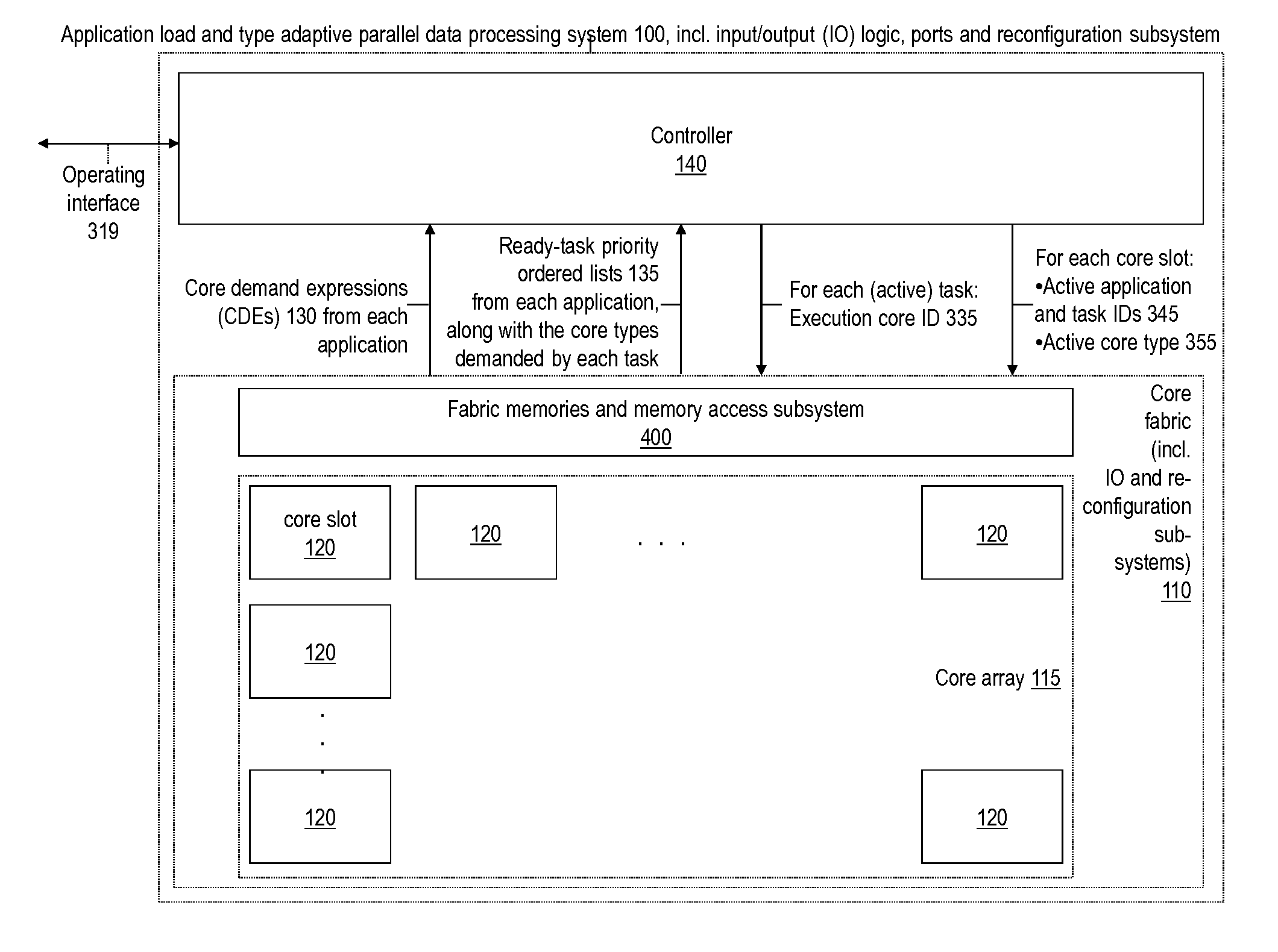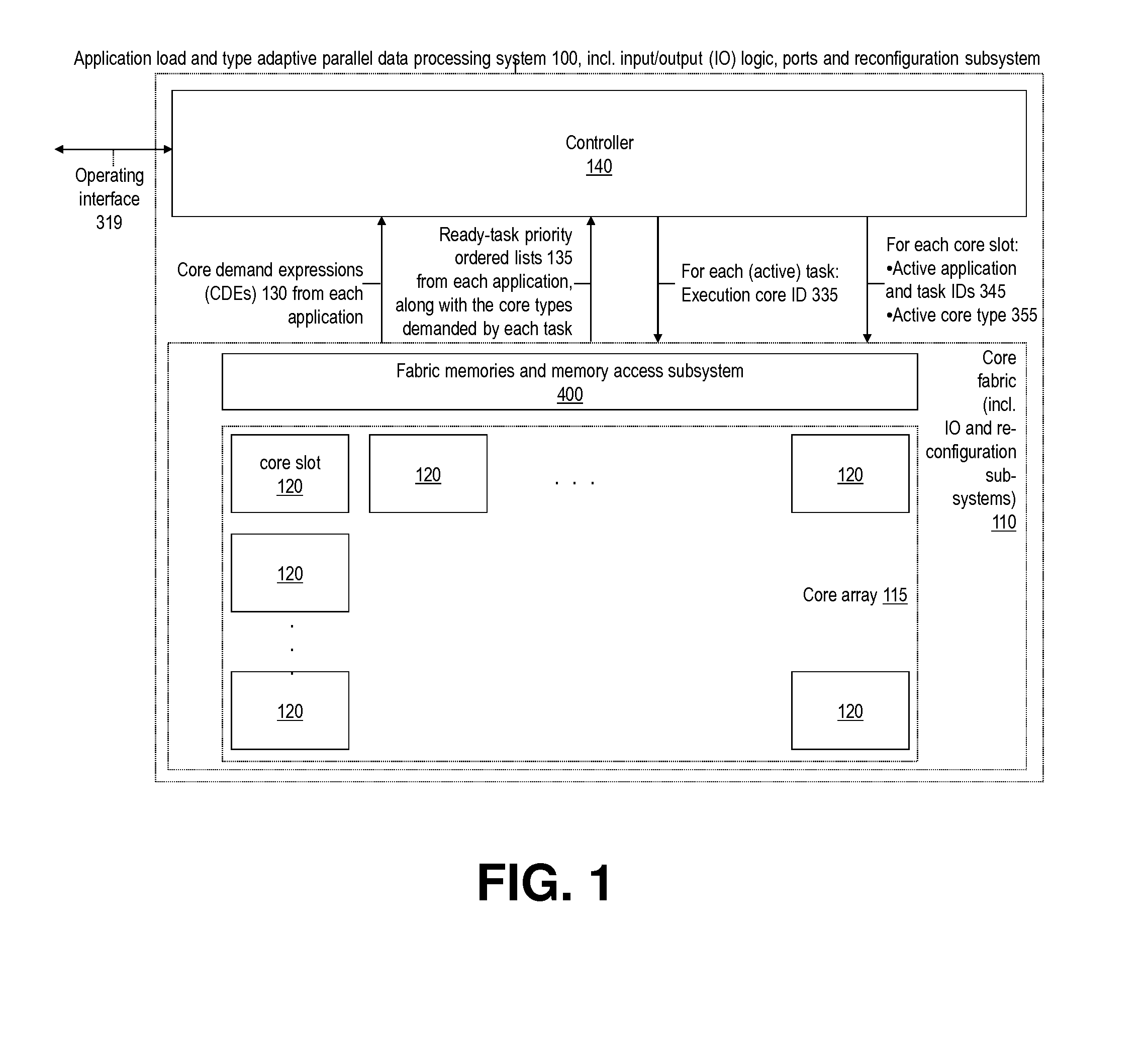Scheduling application instances to configurable processing cores based on application requirements and resource specification
a processing core and resource specification technology, applied in the field of information processing, can solve the problems of low overall data processing efficiency, inability to predict ahead, and inability to process generic processor hardware, and achieve the effect of flexible, high-performance and cost-efficient information processing
- Summary
- Abstract
- Description
- Claims
- Application Information
AI Technical Summary
Benefits of technology
Problems solved by technology
Method used
Image
Examples
Embodiment Construction
[0030]FIGS. and related descriptions below provide specifications for embodiments and aspects of an application program task load and type adaptive manycore processor, supporting execution of multiple concurrent application programs and their tasks and instances thereof on execution cores of matching types.
[0031]The references [1]-[3] provide a multistage manycore processing architecture, where from the set of pipelined and / or parallelized application programs sharing such a multistage parallel processing system, typically one task per each of the applications is located at each of the processing stages. Where the application type adaptive manycore processor systems per this specification is used in such multistage architectures, per each given processing stage, typically thus just one processor core type is needed per each of the applications sharing the given processing system. Accordingly, in such embodiments of system 100 (FIG. 1), the application ID# assigned for processing by ...
PUM
 Login to View More
Login to View More Abstract
Description
Claims
Application Information
 Login to View More
Login to View More - R&D
- Intellectual Property
- Life Sciences
- Materials
- Tech Scout
- Unparalleled Data Quality
- Higher Quality Content
- 60% Fewer Hallucinations
Browse by: Latest US Patents, China's latest patents, Technical Efficacy Thesaurus, Application Domain, Technology Topic, Popular Technical Reports.
© 2025 PatSnap. All rights reserved.Legal|Privacy policy|Modern Slavery Act Transparency Statement|Sitemap|About US| Contact US: help@patsnap.com



